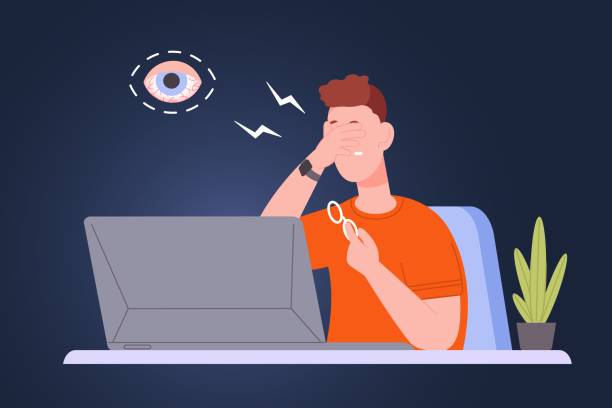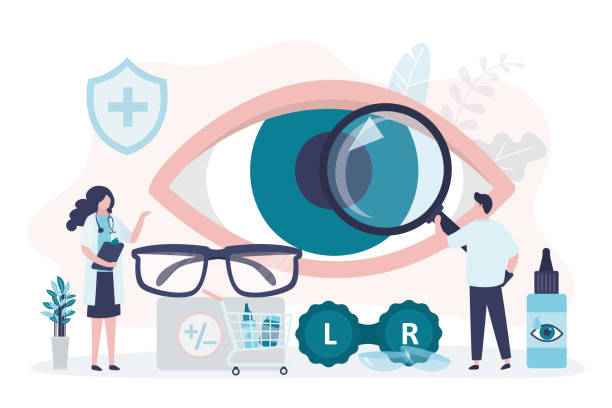Why Vision and Eye Health Matter
Your eyesight plays a crucial role in your daily life. From reading to driving and even enjoying nature, your vision affects how you experience the world. Yet, many people neglect their eye health until problems arise. Taking proactive steps today can help prevent serious issues later.
Our eyes serve as one of our most valuable senses, processing nearly 80% of the information we take in daily. Good vision is essential for both cognitive and motor function, enabling us to interact effectively with our surroundings. When our eyesight is compromised, it can lead to challenges in learning, working, and even performing simple tasks such as recognizing faces or reading signs.
Unfortunately, many people take their eyesight for granted, assuming that vision loss is an inevitable part of aging. However, many common eye conditions—such as macular degeneration, cataracts, and glaucoma—can be prevented or managed with proper care. Early intervention can make a significant difference in preserving vision and avoiding irreversible damage.
Beyond the physical impact, poor eye health can also take an emotional and psychological toll. Studies have shown that individuals with vision impairment are more likely to experience anxiety, depression, and social isolation. Reduced independence, difficulty with mobility, and struggles with daily tasks can all contribute to a diminished quality of life. This highlights the importance of taking proactive steps to maintain eye health throughout your lifetime.
Additionally, healthy vision plays a crucial role in safety. Clear eyesight is necessary for driving, avoiding hazards, and responding quickly to emergencies. Poor vision increases the risk of falls, injuries, and accidents, especially in older adults. Maintaining good eye health isn’t just about clarity of sight—it’s about enhancing overall well-being and ensuring a safe, independent lifestyle.
By prioritizing eye health through regular checkups, a balanced diet, and protective measures, you can safeguard your vision for years to come. In this guide, we’ll cover the best ways to maintain good vision and eye health, common eye problems, and when to see an eye doctor.

Common Eye Problems and How to Prevent Them
Our eyes go through a lot daily, from screen exposure to environmental stressors. Understanding common eye conditions can help you take steps to prevent them.
1. Digital Eye Strain
In today’s digital world, many people spend hours staring at screens, whether for work, school, or entertainment. This prolonged screen exposure can cause symptoms like dry eyes, headaches, blurred vision, and neck pain. Digital eye strain, also known as computer vision syndrome, is becoming more common as our reliance on technology increases.
Prevention Tips:
- Follow the 20-20-20 rule: Every 20 minutes, look at something 20 feet away for at least 20 seconds.
- Adjust your screen brightness to match your surroundings to reduce glare.
- Use blue light-blocking glasses to minimize blue light exposure, which can contribute to eye strain and sleep disturbances.
- Maintain proper screen distance—keep your monitor about an arm’s length away from your face.
- Blink frequently to keep your eyes lubricated.
- Use artificial tears if your eyes feel dry.
2. Dry Eyes
Dry eye syndrome occurs when your eyes do not produce enough tears or when the tears evaporate too quickly. This can cause discomfort, redness, irritation, and a gritty feeling in the eyes.
Prevention Tips:
- Stay hydrated and drink plenty of water to maintain adequate tear production.
- Use a humidifier if the air in your home or workplace is dry.
- Take breaks from screens and blink more often to keep your eyes moist.
- Avoid smoke, wind, and air conditioning that can dry out your eyes.
- Eat foods rich in omega-3 fatty acids, such as salmon and walnuts, to support tear production.
3. Cataracts
Cataracts are a common age-related condition that causes clouding of the eye’s lens, leading to blurry vision. If left untreated, cataracts can result in significant vision loss.
Prevention Tips:
- Wear UV-protective sunglasses to reduce sun damage and slow cataract development.
- Eat a diet rich in antioxidants, such as leafy greens, berries, and nuts, which can help prevent oxidative damage.
- Avoid smoking, as it increases the risk of cataracts.
- Schedule regular eye exams to detect cataracts early and monitor their progression.
4. Glaucoma
Glaucoma is a group of eye diseases that damage the optic nerve, often due to high intraocular pressure. It is one of the leading causes of blindness worldwide, and many people do not experience symptoms until significant vision loss occurs.
Prevention Tips:
- Get regular eye checkups, especially if you have a family history of glaucoma.
- Exercise regularly to help lower eye pressure.
- Avoid prolonged use of corticosteroid medications without medical supervision.

Best Foods for Eye Health
What you eat directly affects your eye health. A nutrient-rich diet can help prevent eye diseases and improve overall eye function.
Top Nutrients for Healthy Eyes:
- Vitamin A (carrots, sweet potatoes, eggs, dairy) – Supports night vision, prevents dry eyes, and helps maintain a clear cornea.
- Omega-3 fatty acids (salmon, flaxseeds, walnuts, chia seeds) – Helps prevent dry eyes, reduces inflammation, and supports the retina’s function.
- Lutein & Zeaxanthin (spinach, kale, corn, eggs) – Powerful antioxidants that protect against macular degeneration and cataracts by filtering harmful blue light.
- Vitamin C (oranges, strawberries, bell peppers, broccoli) – Strengthens eye blood vessels, reduces the risk of cataracts, and boosts collagen production in the cornea.
- Zinc (beef, chickpeas, lentils, pumpkin seeds) – Supports immune function, helps transport vitamin A to the retina, and reduces the risk of age-related macular degeneration (AMD).
- Vitamin E (almonds, sunflower seeds, avocados) – Helps protect eye cells from free radical damage, which can contribute to cataracts and AMD.
Additional Foods That Boost Eye Health:
- Blueberries and Grapes: Rich in antioxidants that help protect the retina from oxidative damage.
- Tomatoes: Contain lycopene, which may reduce the risk of light-induced damage to the retina.
- Green Tea: Loaded with catechins, which help lower oxidative stress in the eyes.
- Eggs: A great source of lutein, zeaxanthin, vitamin E, and zinc, making them a powerhouse for eye health.
- Dark Chocolate: Contains flavonoids that help improve blood flow to the retina, enhancing visual function.
To maintain optimal eye health, incorporate a variety of these nutrient-rich foods into your diet. Eating a balanced diet full of antioxidants, healthy fats, and essential vitamins can significantly reduce the risk of eye diseases and support overall vision health.
Eye Exercises to Improve Vision
While eye exercises won’t cure refractive errors like nearsightedness or farsightedness, they can help reduce strain, improve focus, and strengthen eye muscles.
Try These Simple Exercises:
- Palming: Rub your hands together to create warmth and place them over your closed eyes for a few minutes to relax them.
- Focus Shifting: Hold your thumb close to your face, then slowly move it away while keeping your focus on it. Repeat multiple times.
- Eye Rolling: Roll your eyes in circular motions to improve flexibility and circulation.
- Figure Eight Exercise: Imagine a large figure eight and trace it with your eyes to enhance coordination.
How to Protect Your Eyes from UV Rays
Too much sun exposure can harm your vision and increase the risk of cataracts and macular degeneration. UV rays can also contribute to eye conditions like photokeratitis (sunburn of the cornea).
Ways to Shield Your Eyes:
- Wear sunglasses with 100% UVA/UVB protection to reduce exposure.
- Use a wide-brimmed hat for extra shade when outdoors.
- Avoid looking directly at the sun, especially during peak hours.
- Consider polarized lenses for added glare reduction.

The Importance of Regular Eye Exams
Even if your vision seems fine, routine eye exams can catch problems early. Eye doctors can detect conditions like glaucoma, macular degeneration, and diabetes-related eye issues before symptoms appear.
How Often Should You Get an Eye Exam?
- Children: Before age 3 and before starting school to detect vision problems early.
- Adults (18-40): Every two years if no vision problems are present.
- Adults (40-60): Every one to two years, as the risk of age-related eye conditions increases.
- Seniors (60+): Every year, or as recommended by your doctor.
- People with diabetes or a family history of eye diseases: More frequent exams as advised by an optometrist or ophthalmologist.
Final Thoughts: Take Charge of Your Eye Health Today
Your eye health is essential to your overall well-being. Good vision allows you to work, learn, and enjoy life to the fullest. By taking small, consistent steps today, you can significantly improve and preserve your eyesight for the future.
Here’s a quick recap of what you can do to maintain optimal eye health:
- Eat a balanced diet rich in vitamins A, C, E, and omega-3 fatty acids.
- Protect your eyes from UV rays with high-quality sunglasses and hats.
- Limit screen time and follow the 20-20-20 rule to reduce digital eye strain.
- Practice good eye hygiene, such as washing hands before touching your eyes and removing makeup before bed.
- Exercise regularly to improve blood circulation and support eye health.
- Schedule routine eye exams to detect problems early and prevent vision loss.
Your vision is worth protecting, and small changes in your lifestyle can make a big difference. Make eye health a priority today to ensure a lifetime of clear sight.
What steps do you take to keep your eyes healthy? Share your thoughts in the comments!

